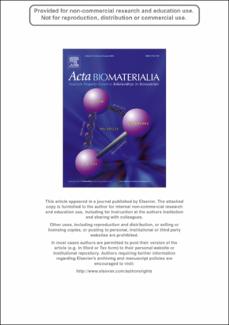Implant osseointegration and the role of microroughness and nanostructures: Lessons for spine implants
Fecha
2014-04-08Autor
Gittens, Rolando A.
Olivares-Navarrete, Rene
Schwartz, Zvi
Boyan, Barbara D.
Metadatos
Mostrar el registro completo del ítemResumen
The use of spinal implants for spine fusion has been steadily increasing to avoid the risks of complications and donor site morbidity involved when using autologous bone. A variety of fusion cages are clinically available, with different shapes and chemical compositions. However, detailed information about their surface properties and the effects of such properties on osteogenesis is lacking in the literature. Here we evaluate the role of surface properties for spinal implant applications, covering some of the key biological processes that occur around an implant and focusing on the role of surface properties, specifically the surface structure, on osseointegration, drawing examples from other implantology fields when required. Our findings revealed that surface properties such as microroughness and nanostructures can directly affect early cell behavior and long-term osseointegration. Microroughness has been well established in the literature to have a beneficial effect on osseointegration of implants. In the case of the role of nanostructures, the number of reports is increasing and most studies reveal a positive effect from the nanostructures alone and a synergistic effect when combined with microrough surfaces. Long-term clinical results are nevertheless necessary to establish the full implications of surface nanomodifications

